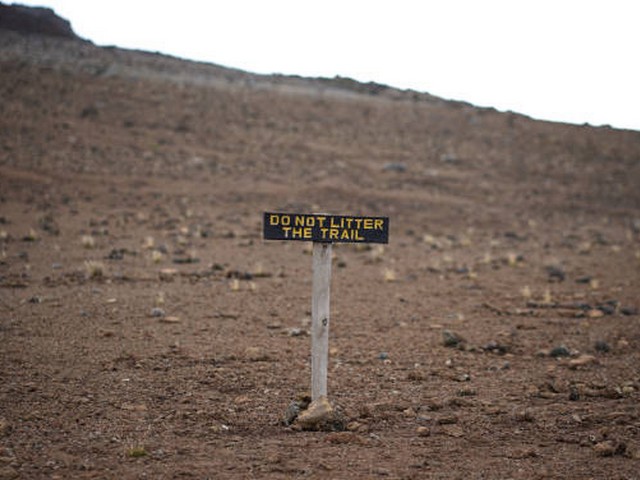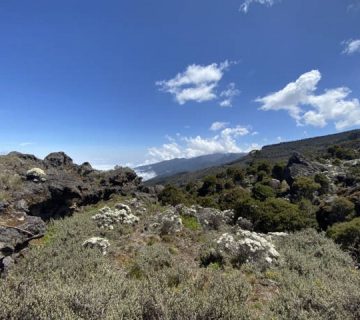How To Photograph The Glaciers On Kilimanjaro: A Visual Journey
Welcome to the spellbinding heights of Mount Kilimanjaro!
Capturing the majestic beauty of the glaciers on Mount Kilimanjaro ranks as one of the most awe-inspiring experiences for any photographer. Whether you’re a professional lensman or a passionate hobbyist, the towering presence and ethereal glow of Kilimanjaro’s glaciers offer a spectacular tableau like no other. At Kilimanjaro Centre for Trekking and Ecotourism (KCTE), we understand the allure these icy giants hold. That’s why we’ve crafted this detailed guide to help you immortalize the pristine beauty of Kilimanjaro’s glaciers through your camera lens.
Understanding The Glacial Landscape of Kilimanjaro
Kilimanjaro, Africa’s highest peak, is not only a trekker’s paradise but also a stunning venue for glacier photography. Before you embark on your photographic expedition, it’s crucial to understand what you’re capturing. Kilimanjaro’s glaciers, such as the famous Rebmann Glacier and the Furtwängler Glacier, are among the few remaining equatorial ice caps in the world. Despite their resilience, these glaciers are rapidly receding, making your photographs part of essential historical documentation.
Best Time to Photograph Kilimanjaro’s Glaciers
Golden Hours: Dawn and Dusk
Catching the glaciers as they are bathed in the soft, golden light of sunrise or sunset can create the most magical images. The low sun provides a natural, dramatic backlight and enhances the textures and contours of the ice.
Clear Skies: Dry Seasons
Kilimanjaro has two dry seasons, from late June to October and from late December to early March. These periods offer clearer skies and fewer clouds, ensuring your views of the glacier are unobstructed and the lighting is consistent.
Preparing for Your Photographic Trek
Gear Up
- Camera Equipment: A DSLR or a mirrorless camera with manual settings will give you control over the light and exposure necessary for capturing the glaciers.
- Lenses: A good range of lenses (wide-angle for landscapes, a telephoto lens for close-ups of ice patterns, and perhaps a macro lens for detailed ice crystals).
- Tripod: Essential for stability, especially in windy conditions or when shooting in low light during dawn and dusk.
- Filters: Polarizing filters can help reduce glare from the ice, and neutral density filters will manage the exposure levels in bright snow.
Physical Prep
- Trekking to photographic vantage points requires good physical condition. Consider a training regimen that includes cardio for endurance and strength training to handle your gear on the trek.
- Acclimatization days are crucial. Plan your itinerary to allow your body to adjust to high altitudes, ensuring you’re in the best condition to focus on your photography.
Capturing The Glaciers: Tips and Techniques
Play with Perspectives
Experiment with different angles and elevations. A higher vantage point can capture the vastness of the glaciers, while a lower angle might emphasize the towering heights of the ice.
Maximize the Natural Light
Understand the interplay of light and shadow on the ice. Early mornings and late evenings provide a softer, diffused light that enhances the glaciers’ blue hues and intricate details.
Focus on Composition
Incorporate elements such as the rugged mountain foreground or the dramatic skies of Kilimanjaro to frame the glaciers, adding depth and context to your shots.
Long Exposure Mastery
Use long exposures to create smooth, ethereal images of the clouds and sky swirling around the sharp, icy peaks.
Why Choose KCTE for Your Kilimanjaro Expedition?
At Kilimanjaro Centre for Trekking and Ecotourism, we not only provide expert guides familiar with the best photographic spots but also ensure that your journey to these frozen spectacles is safe and rewarding. We understand the nuances of the mountain’s geography and climate, offering you insider tips that only seasoned professionals know.
Preserving the Moment and the Mountain
Remember, photographing Kilimanjaro’s glaciers isn’t just about taking stunning images; it’s also about capturing the fragile beauty of a changing landscape. We encourage all our photographers to practice ethical photography, respecting the local environment and contributing to its preservation.
FAQs
Q: Do I need special permits to photograph on Kilimanjaro?
A: No special photography permits are required, but you will need the standard climbing permits and passes, which KCTE can arrange for you.
Q: Can beginners in photography join your tours?
A: Absolutely! We cater to photographers of all skill levels and provide guidance that can help beginners take stunning photographs.
Q: What is the best season for photographing the glaciers?
A: The dry seasons, particularly from late June to October and from late December to early March, offer the best conditions for glacier photography.
Q: How can I book a photography-focused trek to Kilimanjaro?
A: Simply contact Kilimanjaro Centre for Trekking and Ecotourism (KCTE). We offer specialized tours tailored for photographers looking to capture the beauty of Kilimanjaro’s glaciers.
Capture the Disappearing Glaciers of Kilimanjaro with KCTE
Photographing Kilimanjaro’s glaciers is an unforgettable experience that combines adventure with the art of photography. Join us at Kilimanjaro Centre for Trekking and Ecotourism to ensure that you capture not just images, but memories that will last a lifetime. Book your climbing expedition with KCTE and immortalize the beauty of Kilimanjaro’s icy marvels before they retreat into the annals of history. Let’s make your photographic dreams a reality on the roof of Africa. Contact KCTE today!




